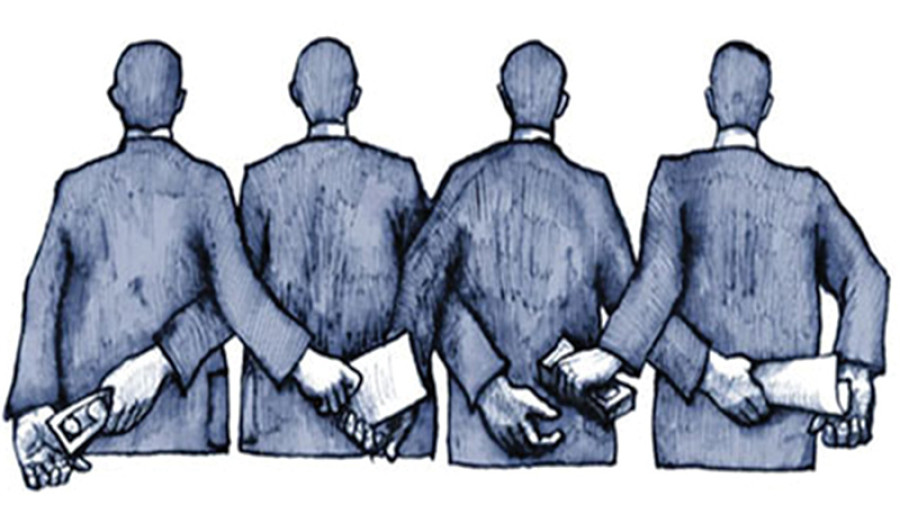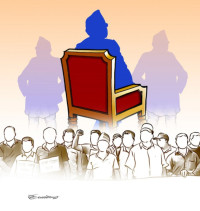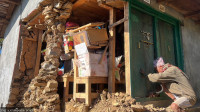Opinion
Fighting corruption
The cancer of corruption is eating away at Nepal, leading to state indebtedness, insolvency and chaos
Niranjan Mani Dixit
With 18 charges levelled against her, including collusion, corruption, bribery, extortion, abuse of power and leaking state secrets, South Korea’s former president Park Geun-hye was ousted this past May after Court investigations and millions of people took to the streets demanding her dismissal. Likewise, the Pakistani Supreme Court’s order removed Prime Minister Nawaz Sharif in July over accusations of corruption reflected in Sharif’s and his family members’ excessive finances/assets beyond legitimate income and affordable standards. Such initiatives could set an example in tackling corruption.
Alarming laxity
There is a causal relationship between corruption, political instability and economic underdevelopment. The founder of modern Nepal, king Prithivi Narayan Shah, decreed that the state machinery adopt a stringent policy of “zero tolerance” towards corruption 250 years ago, saying that both bribe takers and bribe givers are the worst enemies of the nation. Contrarily, corruption is rife and plagues Nepal today; it has been the root cause of Nepal’s regression in socio-economic development.
With federal democracy in its infancy, and due to political instability accompanied by the absence of a newly elected majority government, corruption has been allowed fertile ground to flourish. According to the 2016 Corruption Perceptions Index (CPI) reported by Transparency International (TI), Nepal’s Corruption Rank averaged 128.08 from 2004 until 2016. Nepal is ranked 131st—out of 176 countries—meaning it is the third most corrupt country in South Asia in the 2016 report. The Report of Office of the Auditor General of Nepal (OAG) claims that the amount of cumulative unsettled accounts reached some Rs343 billion, one-half of last year’s budget. Media news that tax revenue misappropriation worth Rs21 billion by the Tax Settlement Commission (2015), as per CIAA anti-graft body, is under investigation has been shocking and ruinous as this amount pertains to only around 45 files/cases examined out of nearly 1,046 files. Checks and balances and a thorough supervision and monitoring of the TSC, from day one itself, could have remedied this situation. The government and political sector’s indifference to the embezzlement cases is alarming.
Country reports on Human Rights Practices 2013 by the US Department of State identified the severity of corruption in Nepal, stating that “Corruption existed at all levels of government and police, and the courts remained vulnerable to political pressure, bribery, and intimidation. Although the law provides criminal penalties for corruption by officials, there continued to be reports that officials engaged in corrupt practices with impunity.” According to World Bank (2013) Code for Nepal, more than one in 10 transactions involved a bribe and almost half of the firms identified corruption as a major constraint; three in five firms were expected to give ‘gifts’ to secure government contracts; and almost one in five firms were expected to give ‘gifts’ to get a construction permit. Given the enormity of corruption, it is suspected that poor people pay up to an estimated 15 percent of their income in bribes while high-income households pay an estimated 8 percent.
Corruption is stealing. The cancer of corruption is an ‘economic terrorism’ eating away at Nepal like termites going through wood, leading to state indebtedness, insolvency and chaos. The expanding government normally begets incompetence and corruption. Collusion, hand-picking of bureaucrats and public office bearers in key positions and their reshuffling for personal gains has been detrimental. Mending laws and bills covering different sectors including financial institutions, health and medical education for political and personal gains have serious ramifications. Corruption begets corruption, it is a chain effect. There is no greater fraud than a promise not kept in stopping corruption. A rigorous scrutiny mechanism, and active supervision and monitoring built into the government system, development projects and public utility services could drastically curb corruption, bribery and cartel effects.
The press media’s critical role in unfolding incongruities and discrepancies is creditable. Daunting news about shoddy governance, corruption and bribery, underdevelopment and discrepancies, and anomalies in state affairs continues. The corruption nexus, and the predominance of Kathmandu-centric groups with vested interests and their drive for personal gains seems to have almost hijacked the state’s attempt at making any headway. Millions of Nepalis long to see their country develop and cut away from the deadly, corruption-induced mayhem. In effect, a cynical attitude and mistrust of the people towards state officialdom and political leaders has been mounting.
Unanswered questions
Nepal has a comprehensive legal anti-corruption framework in place, but enforcement of all corruption-related regulations is very weak. The Prevention of Corruption Act, which criminalises attempted corruption, active and passive bribery, money laundering, extortion, facilitation payments, abuse of office and embezzlement is not adhered to strictly. This leaves us with some pertinent questions: How do we escape from this corruption trap that our country is stuck in? While corruption, bribery and money laundering is rife and the judiciary is under political influence, what happens to the inflows of Foreign Direct Investments and Foreign Aided Projects? What of infrastructure development, economic growth, and the fate of people’s hard earned tax money? What of achieving the Sustainable Development Goals by 2030? Also, what has been the UN initiative so far, as Nepal has ratified the United Nations Convention against Corruption (UNCAC)?
Dixit is an expert in integrated development issues




 11.12°C Kathmandu
11.12°C Kathmandu










